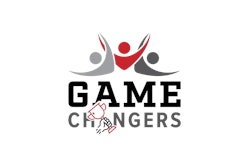![[Photos courtesy of Newton Athletic Club]](https://img.athleticbusiness.com/files/base/abmedia/all/image/2016/04/ab.PB416_feat.png?auto=format%2Ccompress&q=70&w=400)
This article appeared in the April issue of Athletic Business. Athletic Business is a free magazine for professionals in the athletic, fitness and recreation industry. Click here to subscribe.
At the inception of the Newtown Athletic Club (NAC) in 1978, we were known as the Newtown Racquetball Club and things were much different than they are today. I was a one-man band overseeing exclusively part-time employees running a 15,000-square-foot racquetball club on three acres of land.
 When people see that they are partners, they become acutely attuned to various aspects of the business.
When people see that they are partners, they become acutely attuned to various aspects of the business.
As we evolved, we experienced growth not only in terms of our physical assets, but also in programs and staffing. In the late 1980s, while still overseeing the management of the club, I took a position with one of my partners on Wall Street for three years. It was there that I realized the benefits of an "open book" management style. As I was reviewing the financial statements of other companies, I noted the same information was also available to shareholders.
I decided that if I wanted my club to run smoothly, I needed buy-in from my managers — I needed them to be shareholders. If I truly wanted them to act like partners and bear a genuine sense of ownership, I had to be fully transparent.
Full transparency of the company financials was the first requirement to achieve my goal of instilling a sense of ownership. The second was to incentivize the managers with a percentage of the profits based on the success of the club as a whole, combined with the success of their individual departments. Thus, every number — both on the expense and revenue side — had to be shared monthly with all department heads.
FINDING A BALANCE
When people see that they really are partners, they become acutely attuned to such aspects of the business as employee productivity, expenses and revenue — and that can be good and bad. For example, when managers became highly involved and motivated by this approach, their payroll in some cases became too lean or they were slow to reinvest in physical changes or new equipment. This creates the potential for degradation in quality of service and eventual decreased revenue. As "owners" of their departments, they discovered that there is risk involved and that risk is only mitigated by their own determination to be successful. As always, balance is the key.
Moreover, despite the fact that all department managers are shareholders, they cannot all be judged by the same criteria. Some departments lend themselves to easy accountability in terms of revenue generated: personal training, food and beverage, or a salon and spa. Other departments, such as group exercise or marketing, are more challenging to evaluate.
In the case of group exercise, we measure participation and customer satisfaction, as well as expenses. Over the past two years we have been using the Medallia MXM system to effectively track member satisfaction in all departments, and it has been a game-changing element in our business model. And by assigning individual marketers to focus on marketing specific departments, we are able to tie them into the success of those departments and reward them accordingly.
A key element to the success of the open-book approach is for it to be passed through the department heads to their own staff members. I encourage my individual department heads to manage this process. The ones who do it with consistency are the most successful.
THE NEXT CHAPTER
The overarching effect on an owner who implements this open-book style is that they are free to be less involved with the business on a day-to-day operational basis and leave it in the hands of the managers, who have something very real at stake — their own "piece of the pie."
I attribute the explosive growth of the club to this model. By setting aside the day-to-day tasks, I was able to step back and focus on a vision for the future based on trends both in the local community and the industry at large.
As I look back over my 37 years in this industry, I can honestly say that the open-book style of management is one of the key reasons we have grown as a business. From a 15,000-square-foot racquetball-only club on three acres of land, we have evolved into a 250,000-square-foot lifestyle club on 22 acres, poised to add another 20,000 square feet that will take us once again to another level of service, facility amenities and programming, including a huge commitment to wellness.
If you buy into this open-book approach, don't be afraid to reveal anything to your stakeholders — even your own stake in the system. Don't apologize for your compensation; after all, you are the one taking all the risk. If others are willing to share in your risk, they will share in your reward. These are the leaders who will follow in our footsteps. They are the future of the industry, and they deserve to learn from our success and our mistakes.
Jim Worthington is owner and president of Newtown Athletic Club in Newtown, Pa.
This article originally appeared in the April 2016 issue of Athletic Business with the title "Turning managers into shareholders: a lesson from Wall Street"




































